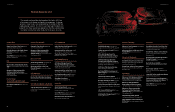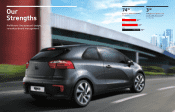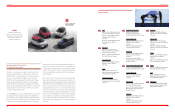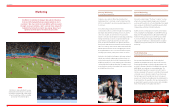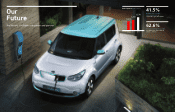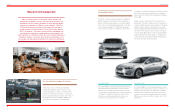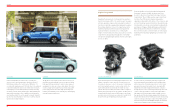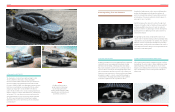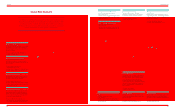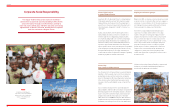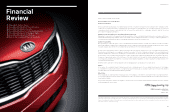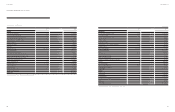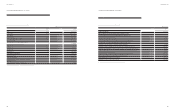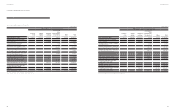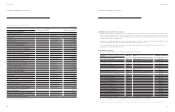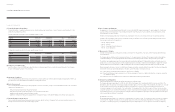Kia 2014 Annual Report Download - page 28
Download and view the complete annual report
Please find page 28 of the 2014 Kia annual report below. You can navigate through the pages in the report by either clicking on the pages listed below, or by using the keyword search tool below to find specific information within the annual report.
3. Transmission: DCT & CVT
The transmission of a vehicle has a signicant impact on fuel
efciency. Kia Motors developed a continuously variable
transmission (CVT) in 2012 and introduced a 7-speed dual clutch
transmission (DCT) at the Hyundai-Kia International Powertrain
Conference in 2013. In 2014, at the Guangzhou International Auto
Parts & Accessories Exhibition, we released the KX3, a localized
strategic subcompact SUV concept with DCT for the Chinese
market. The DCT combines the economy of a manual transmission
with the convenience of an automatic transmission, enhancing fuel
efciency by 5-7%. It also boasts fast response time and smooth
speed changes thanks to its two clutches that operate in tandem.
The CVT is currently found in the Morning (Picanto) and Ray
lightweight vehicles, whose fuel efciency is the most important
purchasing factor.
Kia Motors has become a
global leader in technology
by developing innovative
engines and presenting its R&D
competitiveness at international
powertrain conferences.
We place the highest priority on the safety of all Kia products
and are developing safety technologies that enhance the
protection of pedestrians and assist in preventing even minor
errors by drivers. We are also working to minimize injuries to
passengers in case of accidents.
Kia Motors improves the safety of its vehicles through crash
simulation testing. Our crash test facilities at Hwaseong Plant
and Namyang R&D Center allow us to carry out computer
simulations from the very initial stage of vehicle development;
and we perform over 100 actual vehicle crash tests before a
new model is released.
Through high-speed cameras installed at the crash site, we
observe crash test dummies during a collision and analyze data
obtained from sensors attached to the dummies. We study the
impact of collisions on passengers with higher risk, including
pregnant women, nursing mothers and children. The results of
our testing are reected in safety provisions implemented in all
new vehicles under development.
1. Air bags and seat belts
Air bags and seat belts are the most fundamental items for passenger
safety. All Kia cars are now equipped with six airbags, including
driver/passenger seat airbags, side airbags, and a curtain airbag
that activates instantaneously in the event of a side impact crash or
rollover in order to lower the risk of head injury. Our improved seat
belts, now featuring a seat belt pre-tensioner, hold occupants more
rmly in their seats at the time of a collision and then release slightly,
allowing the occupant to come into contact with the airbag in a
controlled manner. The airbags and seat belts operate together to
ensure that occupants are as safe as possible in a collision.
2. Vehicle Stability Management (VSM) System
VSM is a safety feature that detects dangers and controls vehicles
during driving. The system enhances driving stability by accurately
diagnosing driving conditions through various sensors. Vehicle
Dynamic Control (VDC) and Motor Driven Power Steering (MDPS)
help to automatically control the steering wheel and brakes on
bumpy roads.
Ensuring safety, rst and foremost
52 53
Annual Report 2014Our Future


